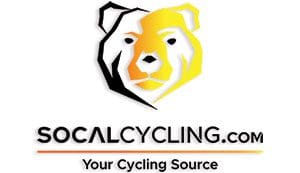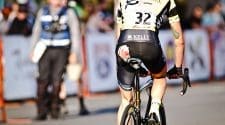For cyclists, recovery is often the unsung hero of performance. Whether you’re tackling long weekend rides, interval training, or preparing for a race, what happens after you dismount can be just as important as the training itself. Muscle repair, energy restoration, and adaptation to stress all occur during recovery periods – and one of the critical factors influencing these processes is testosterone.
While many athletes think of testosterone only in the context of strength sports, it plays a significant role in endurance cycling, too. Understanding how testosterone health affects recovery can help you ride stronger, avoid overtraining, and maintain vitality over the long term.
The Science of Muscle Recovery
When you train hard on the bike, you create micro-tears in your muscle fibers. This damage is normal and necessary – it’s what stimulates your body to adapt and grow stronger. But without adequate recovery, those small injuries can accumulate, leading to fatigue, decreased performance, and even injury.
During recovery, the body goes through several key processes:
- Muscle protein synthesis repairs and rebuilds damaged tissue.
- Glycogen replenishment restores the energy reserves you depleted on the ride.
- Inflammation resolution clears out waste products and reduces swelling.
- Hormonal signaling orchestrates adaptation and prepares your body for future training stress.
Testosterone is a central hormone in this repair process. While it’s often called the “male hormone,” testosterone is critical for everyone. In men, it’s produced mainly in the testes; in women, smaller amounts are made in the ovaries and adrenal glands.
Testosterone’s Role in Recovery and Performance
Testosterone affects nearly every system involved in exercise recovery and adaptation. Here’s why it matters:
1. Muscle Protein Synthesis
Testosterone promotes the production of proteins that rebuild muscle fibers. After a demanding ride, testosterone signals your body to repair and strengthen muscle tissue, which helps you adapt to training over time. Athletes with low testosterone levels – sometimes referred to as Low T – often struggle to recover fully and experience muscle weakness or atrophy.
2. Red Blood Cell Production
Healthy testosterone levels stimulate erythropoiesis, the process of producing red blood cells. More red blood cells mean improved oxygen delivery to muscles, which supports endurance and speeds recovery.
3. Inflammation Control
Testosterone has anti-inflammatory properties. After training, a moderate inflammatory response is beneficial for healing. But chronic inflammation, often seen in overtraining or hormonal imbalance, can delay recovery and lead to lingering soreness.
4. Mood and Motivation
Testosterone also influences mood, motivation, and mental resilience. Low T is associated with fatigue, irritability, and even depressive symptoms – all of which can sap your drive to train or make recovery feel harder.
Low T and Cyclists: Why It Happens
Endurance athletes are not immune to hormonal fluctuations. In fact, prolonged high-volume training can sometimes suppress testosterone production. This condition, sometimes called “exercise hypogonadal male condition,” occurs when the body perceives chronic endurance training as a stressor. Over time, stress hormones like cortisol rise, while testosterone drops.
Common contributors to Low T in cyclists include:
- Excessive training load without adequate recovery
- Very low body fat or caloric restriction
- Chronic psychological stress
- Inadequate sleep
Symptoms of Low T can be subtle at first but often include:
- Persistent fatigue
- Longer recovery times
- Decreased muscle mass and strength
- Reduced libido
- Poor mood or motivation
If you suspect your testosterone health isn’t optimal, consider speaking with a healthcare professional who can evaluate hormone levels and overall health.
Supporting Recovery and Testosterone Health
While you can’t eliminate all the stressors that come with dedicated cycling, you can take proactive steps to support testosterone and recovery. Here are evidence-based strategies:
1. Prioritize Sleep
Sleep is when most muscle repair and hormonal regulation happens. Studies show that even one week of restricted sleep (e.g., five hours per night) can reduce testosterone levels by 10–15%. Aim for 7–9 hours of quality sleep each night.
Tips to improve sleep:
- Keep a consistent bedtime and wake time.
- Avoid screens and blue light in the hour before bed.
- Make your bedroom cool and dark.
2. Eat Enough Calories and Healthy Fats
Undereating – especially during heavy training blocks – can lower testosterone. Healthy fats (found in nuts, olive oil, fatty fish, and eggs) are essential for hormone production.
Consider:
- Eating balanced meals with carbs, protein, and fats.
- Refueling within 60 minutes after a ride to support glycogen replenishment and muscle repair.
- Avoiding drastic calorie cuts that can disrupt hormones.
3. Manage Training Load
Consistent training is key to progress, but chronic overload can drive testosterone down. Use structured training plans that incorporate deload weeks and listen to your body’s signals.
Signs you might need extra rest:
- Persistent muscle soreness
- Poor sleep quality
- Decreasing performance despite hard work
4. Strength Training
Adding resistance training to your routine can help maintain muscle mass and stimulate testosterone production. Even 1–2 sessions per week of compound lifts – like squats, lunges, and deadlifts – can make a difference.
5. Address Stress
Chronic psychological stress raises cortisol, which can suppress testosterone. Mindfulness practices, breathing exercises, and simple hobbies off the bike can all help regulate stress responses.
When to Seek Help
If you’ve implemented healthy recovery habits but still notice signs of Low T – persistent fatigue, low motivation, or decreased performance – it may be worth discussing testing with a qualified healthcare provider. Testosterone health is just one piece of the performance puzzle, but it’s a significant one.
Modern treatments and lifestyle adjustments can help restore balanced hormones and support recovery, so you can keep riding strong.
The Bottom Line
Recovery isn’t a luxury – it’s an essential part of every cyclist’s training plan. Testosterone plays a critical role in muscle repair, energy restoration, and motivation. By understanding how Low T affects recovery and taking proactive steps to support testosterone health, cyclists can protect long-term performance and well-being.
Remember: a smarter approach to training and recovery today builds the foundation for many more miles tomorrow.
Photo by David Dvořáček on Unsplash
No products found.
















